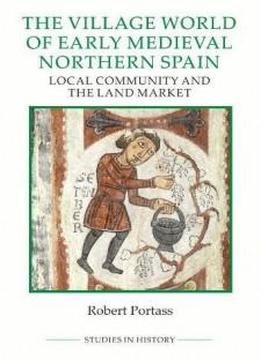
The Village World Of Early Medieval Northern Spain: Local Community And The Land Market (royal Historical Society Studies In History) (studies In History New Series)
by Robert Portass /
2017 / English / PDF
5.9 MB Download
In the early eighth century, the Muslim general Tariq ibn Ziyad led
his forces across the Straits of Gibraltar and conquered most of
the Iberian Peninsula. However, alongside the flourishing kingdom
of al-Andalus, the small Christian realm of Asturias-Leon endured
in the northern mountains. This book charts the social, economic
and political development of Asturias-Leon from the Islamic
conquest to 1031. Using a forensic comparative method, which
examines the abundant charter material from two regions of northern
Spain - the Liebana valley in Cantabria, and the Celanova region of
southern Galicia - it sheds new light on village society, the
workings of government, and the constant swirl of buying, selling
and donating that marked the rhythms of daily life. It also maps
the contact points between rulers and ruled, offering new insights
on the motivations and actions of both peasant proprietors and
aristocrats.
In the early eighth century, the Muslim general Tariq ibn Ziyad led
his forces across the Straits of Gibraltar and conquered most of
the Iberian Peninsula. However, alongside the flourishing kingdom
of al-Andalus, the small Christian realm of Asturias-Leon endured
in the northern mountains. This book charts the social, economic
and political development of Asturias-Leon from the Islamic
conquest to 1031. Using a forensic comparative method, which
examines the abundant charter material from two regions of northern
Spain - the Liebana valley in Cantabria, and the Celanova region of
southern Galicia - it sheds new light on village society, the
workings of government, and the constant swirl of buying, selling
and donating that marked the rhythms of daily life. It also maps
the contact points between rulers and ruled, offering new insights
on the motivations and actions of both peasant proprietors and
aristocrats.











